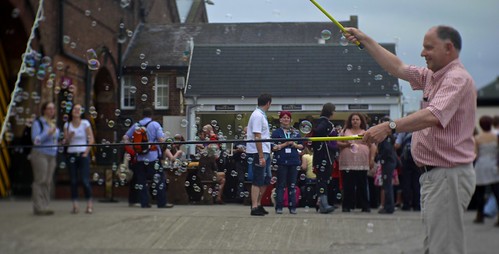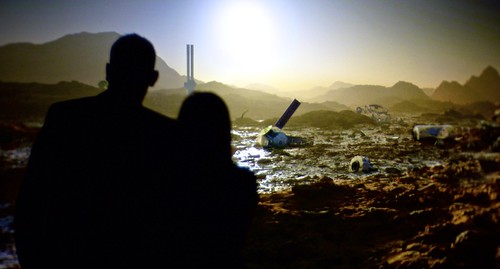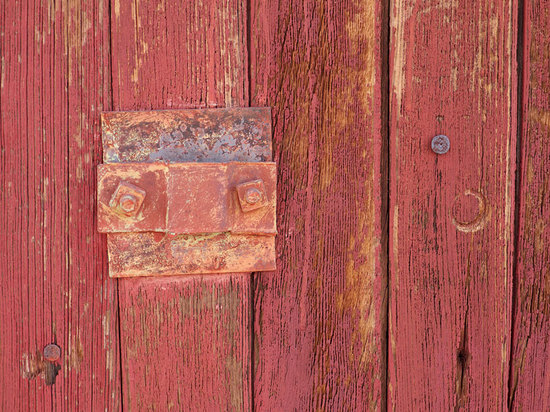Posts from photography
Showreel
We’ve (finally) cut a showreel. It features Richard Dawkins, Dava Sobel, Steven Pinker, David Attenborough, Jem Stansfield, Bruce Hood, Alok Jha, Matt Parker, Jon Butterworth… and a lobster.
Showreels, it turns out, are hard. In our case, we’re aware that many potential clients come across our work via some of the more straightforward films we’ve made. It can be tricky to convince them that’s an aesthetic or narrative choice rather than an indicator of our range or inclination, so we wanted a showreel that demonstrated:
- The spread of people with whom we’ve worked.
- Our eye as photographers.
- We’re really good at detailed, close-up, practical science.
- Punchy editing.
- Some serious content.
- …and a sense of whimsy and wit.
Success?
Lens rings
It’s only just occurred to me that the camera manufacturers colour-code their lens rings to remind us of their respective cameras’ skin-tone biases. So: Canon — red. Nikon — gold. Panasonic — sort-of muddy grey.
I note this as I push a bunch of +magenta and -yellow into my Nikon grade, and watch the vectorscope slide over to the skin line.
Gear
A few things that have caught my eye recently:
- Røde microphones have partnered with Rycote to fit the latter’s ‘Lyre’ mounts to the former’s videomic range. I’m a big fan of both companies’ products. They’re good value and perform well.
- Also from Røde: new iXY stereo and SmartLav lavalier mics, both of which use an iPhone (or iPod touch) as the recording device. Not the first of this sort of thing out there (Tascam do an iOS stereo mic attachment), but the SmartLav in particular seems pretty cheap. I’m tempted to pick up an iXY for the same reason I have an Olloclip and Glif — to leave in my bag and hence always have to hand.
- While I’m at it: Tascam also make an XLR interface for iPhones. You read that right. And no, don’t ask about phantom power.
Now, cameras: I very nearly pre-ordered a Panasonic GH3 for video work, but realised that doing so would pretty much lock me into buying the Panasonic X 12-35 and 35-100, and maybe the Voigtländer 25mm. That would make a commendably tiny kit, and the lenses are spectacularly good… but it’s a lot of money to invest in lenses that are only going to be any use if I have a micro4/3 body to hang them off.
If the right job comes along it could still be the right decision, but in the meantime I’ve waited. I’m glad I did — early reports are suggesting that the Nikon D5200 is an unexpected beast as a video camera and something of a bargain, while rumours suggest a D7100 may come along soon. Nikon DSLRs still have some quirks, but I’ve been surprisingly happy shooting with my D7000 for the last couple of years. If the new Nikons are sharper and avoid moiré they could be budget contenders. I’ve been tempted by a D800 with third-party antialiasing filter, but full-frame super-shallow DOF isn’t beneficial to the way I work.
Nikon-mount glass, of course, can be adapted to fit just about anything out there. Which makes it arguably a better investment than anything else.
Update — here’s the first decent D5200 comparative test I’ve seen:
EOSHD Shootout - Nikon D5200 vs Panasonic GH3 (low light) from Andrew Reid on Vimeo.
Article explaining the comparison on Andrew’s blog. As he notes, this isn’t entirely fair to the GH3, but still… go Nikon!
(RGB) Parade’s End
Tom Stoppard’s adaptation for the BBC of Ford Madox Ford’s Parade’s End is gathering rave reviews left, right, and centre. Between Cumberbatch’s mumbling, the intercut timelines, and not quite understanding who everyone was in the breakfast scene I’ll confess I found myself somewhat adrift.
However, this cheered me up:
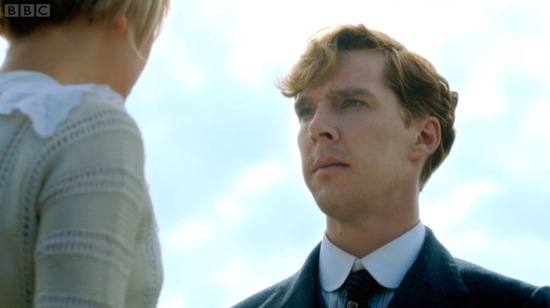
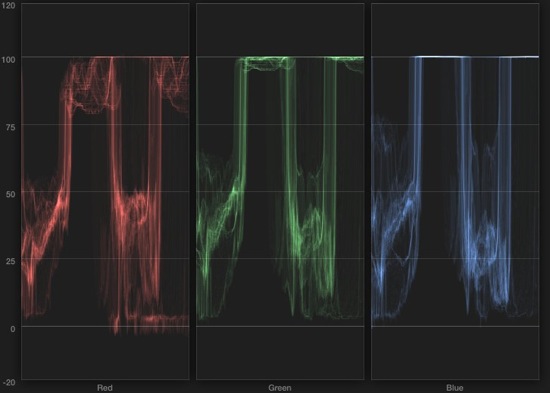
If the BBC can get away with blowing their highlights that badly, I feel a damned sight better about some of my own wayward exposures. The yellowish roll-off makes this looks like it came from a badly-setup AF100, too, which is either an odd production choice or a really odd grading choice.
Storytelling through Composition
Shane Hurlbut (whose surname is, I believe, ‘ASC’) has a nice post about Storytelling through Composition:
I wanted my framing to be like a teenager: off, unpredictable, not perfect, still finding themselves. It was fun to be unconventional with our coverage.
(Via Hurlbut Visuals)
I’m a big fan of the offbeat framings he shows from Crazy/Beautiful. Desperately hard to pull off, there must have been many leaps of faith taken on set.
Aspect ratios
Great post by Ming Thein on Aspect ratios and compositional theory:
Most people will stick to the aspect ratio that is native to the camera, and either do nothing else, or crop to fit later. This is compositionally very, very sloppy – not only do you not get the best frame for the shape of your subject, there’s a very good chance that you probably won’t be able to fill the frame properly, either; 3:2 is a bit of a compromise aspect ratio that lacks the organic intimacy of 5:4 or 4:3 for portraits, or the drama of 16:9 for more expansive scenes.
I’m no Thein, but right now I’m rather enjoying fiddling/cursing/tweaking/fuzting about with a cheap toy lens on my GF1:
I seem to be cropping wider than 16x9 at the moment. Perhaps I’ll work out why if I shoot a whole lot more.
Camera news
So Panasonic have surprised everyone by not announcing a replacement for the AF101 at NAB. That sucks. The brave new large sensor cinematography world hence looks like this — and this is very much a personal take:
Canon 5DmkIII. Nice enough, but unless you dismantle the thing and remove the antialiasing filter (yes, people are really doing this) it’s not a vast improvement on the mkII. Better low light, well-controlled aliasing/moire, decent audio; low resolution, old codec, contaminated HDMI output. My vote: ‘meh.’
Other Canons: just old, now.
Nikon D800. Better in low light than we’d feared, decent audio, clean HDMI, decent codec, FX/DX crop serves as a 1.5x extender; same old horrid aliasing/moire issues, low resolution. My vote: ‘meh.’
Nikon D4: Love the idea of FX/DX/1:1 crop modes, but by all accounts it’s plain soft.
Older Nikons: bwah-hah-hah-hah! (And I write that as a D7000 shooter).
Panasonic AF101. Proper camera, HD-SDI, XLR audio, etc; dodgy highlight & shadow handling, still no really good run&gun lenses. You can get lovely pictures out of the AF101, but it’s edgy to use. My vote: ‘meh, but I don’t regret advising my client to buy one last year.’ They’re extremely good value.
Panasonic GH2. Look, I know nobody takes me seriously on this, but I still think a hacked GH2 is the best bargain this side of £5,000. I may yet put my money where my mouth is.
Sony FS100. Bonkers hunt-the-button design and hilariously dim-witted omission of SDI and ND filters can’t hide a superb sensor. Great choice.
Sony FS700. Like the FS100, but with SDI and ND filters. And 8-sec 240fps 1080p burst recording. WANT. Forget the “4K sometime in the future, once we’ve worked out how to record it and decided how much we’re going to sting you for the privilege”, out of the box this is a great camera. Once you’ve worked out where the buttons are. And stopped remembering that you could have bought two AF101s or a dozen GH2s for the same money.
Canon C300. Lovely camera, but for twice the price of the FS700 I just can’t see it making sense for the likes of me. If I did drama or commercial production, maybe, but I’m a documentary/factual/event guy. The C300 is small and discrete, perhaps… but if that’s your thing, stick with a DSLR and save £10,000. Canon really needs a new codec, too.
RED anything. Yeah. No. Thanks. Different world.
So your decision boils down to ‘Can I afford a proper camera?’: if yes, choose your Sony. If no, I’ll tell you to buy a GH2 and you’ll go straight to whichever Canon costs about what you’re happy to spend. Whatever.
Then Blackmagic do this
Bonkers. Utterly mad. Love it love it love it. They’re insane.
Now, low light looks a bit dodgy to me. The sensor is slightly smaller than m43, about a 2.3x crop by my calculations… which is a bit of a pain. Perhaps. Or maybe very good news for those of us who’ve actually tried focus-pulling APS-C handheld. Battery life is only ~90 minutes, and slapping an extended pack on looks to be tricky given the physical design. Media is relatively costly, sort-of but not really. It’s not exactly clear what they’re doing with lens mounts and aperture control, nor what ‘ZF mount’ means. Does the EF mount power Canon IS lenses? etc etc etc.
But… but… wow, that’s a great idea.
Damn, I really want one of those.
Aaaand an FS700.
Nikon D4
I’m one of the few people who shoots video with a Nikon D7000, more-or-less by accident: I bought the thing for stills, and only subsequently discovered that it’s much better for video than its reputation suggests. For the most part its flaws don’t prevent it from capturing lovely images, but it’s sufficiently compromised that one has to take Nikon’s video aspirations with a pinch of salt.
So the Nikon D4 intrigues me, in that if you believe all the blog comments out there it’s become the video DSLR to have within minutes of its launch. It may well be so, but there are plenty of things we don’t know. Chiefly:
- Line skipping, or software downsampling with a low-pass filter? If it’s the former, the D4 is dead in the water for video — as is every other DSLR at this point except the Panasonic GH2 and the Canon 1Dx.
- Exposure metering during Live View/video? There doesn’t seem to be a live histogram, let alone waveform, but hopefully there’s something. If not, we may be able to work around using the zebras in a third-party EVF, but… well, sheesh.
- Aperture control in Live View. Still not clear how this works. Is it stepless? Does it really work?
- 20 minute recording time, apparently. If that’s due to European tax laws, well yah boo sucks and break out the Ninja/NanoFlash/whatever. If it’s instead a heat protection issue — how reliable is the camera for long-form recording via HDMI?
- Audio. There’s clearly hope, but is it really any good?
- Low-light performance in video. The D7000 is excellent, but in video it’s clearly not as good as for stills. How does the D4 fare?
Until we have more information on all of these, it’s wholly premature to assert the D4’s supremacy.
Here’s the thing, though: one of these with a 24-120 ƒ/4 VR would cover a huge range of focal lengths; rigged up it could deliver stunning quality. If everything turns out right it could be right up there with dramatically more expensive cameras like the Sony F3 and Canon C300. And I’d absolutely have one over a Panasonic AF100. Chances are Nikon have bottled or flubbed it. But maybe, just maybe, they haven’t.
So yes, it’s an exciting camera. But please, let’s not declare it a winner until we know more. That’s just noise.
We’re all about the images
Testing uploads and all that. Besides, it’s about time there were some pretty pictures on this site.
I took this shot in glorious evening light in the ghost town of Rhyolite, between Beatty and Death Valley. One suspects the wood looked like this even when it was new and the paint was fresh.
